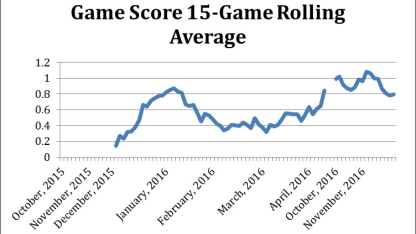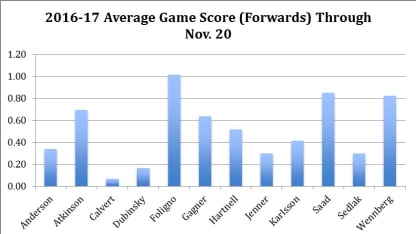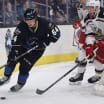Scoring goals wins hockey games, and that's what makes goal scorers draw notice night after night.
Blue Jackets center Alex Wennberg may have gained a share of that spotlight when, on Sunday afternoon, he scored his first game-winning goal of the season with just 53.6 seconds left in D.C. However, Wennberg's consistently improving play on and off the scoresheet has been a signal of how the centerman is stepping up for the Blue Jackets, even beyond the goal count.
Wennberg growing into impact player for Jackets
Third-year pro, now 22, is leading Columbus in scoring and playing a rounded game





















